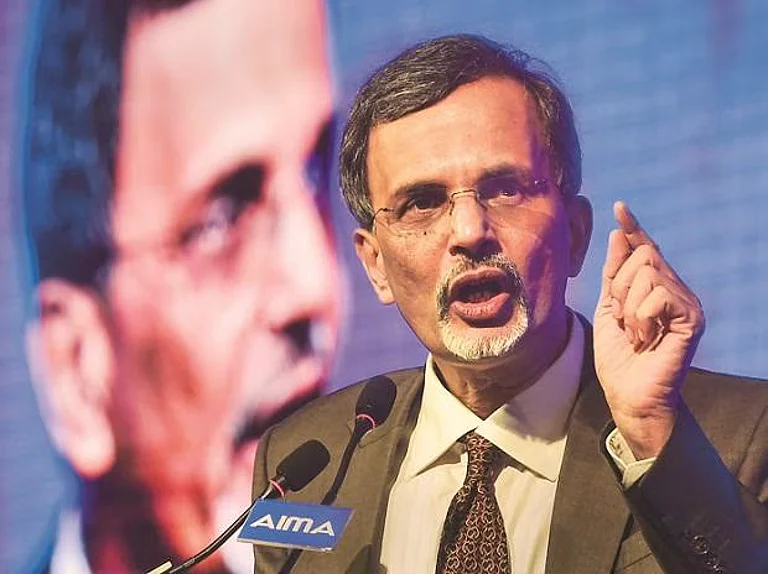The Reserve Bank of India's (RBI) Monetary Policy Committee (MPC), led by new governor Sanjay Malhotra, has cut the benchmark interest rate by 25 bps to 6.25% on Friday for the first time in five years. The RBI governor further announced that the policy stance by the MPC is maintained as “neutral” despite a rate cut.
RBI Cuts Repo Rate After 5 Years: What It Means for Growth, Inflation & Markets
Experts believe this policy shift aims to revitalise economic activity by lowering borrowing costs, thereby encouraging both consumer spending and business investments
"The MPC remains unambiguously focused on a durable alignment of inflation with the target while supporting growth," said Malhotra.
Experts believe this policy shift aims to revitalise economic activity by lowering borrowing costs, thereby encouraging both consumer spending and business investments. It also aligns well with the recent Union Budget for FY26, which increased the tax rebate limit from Rs 7 lakh to Rs 12 lakh.
Growth & Inflation: The Balancing Act Continues
Suman Chowdhury, chief economist at Acuité Ratings & Research, highlights that the cut has been driven by increasing concerns around the growth momentum in the economy particularly subdued urban consumption.
“More disposable income, coupled with lower borrowing costs, creates a perfect recipe for stronger household consumption—one of India’s biggest growth drivers,” notes Vijay Kuppa, CEO of InCred Money.
Forced by the country's inflation-ridden economy, the central bank had maintained its repo rate at 6.5% for almost two years since February 2023, even after holding a 'neutral' policy. A neutral policy stance gives the central bank flexibility to adjust rates as needed.
The monetary panel now projects India's gross domestic product (GDP) growth for FY26 at 6.7%, a moderate improvement over the 6.6% revised estimation for FY25. Earlier, it was projected at 7.2%, highlighting a downward revision in expectations.
In its previous MPC meeting in December, led by former governor Shaktikanta Das, the central bank had revised growth forecasts, lowering the Q3FY25 estimate to 6.8% from 7.4%, Q4 to 7.2% from 7.4%.
"I would like to stick my neck out and say that, certainly India can achieve a 7% and plus growth rate. We should certainly aspire for that," Malhotra added while commenting on whether there was a possibility of the Indian economy growing at a faster pace.
The recent MPC noted that though the growth is expected to recover, it is much lower than last year and inflation dynamics have opened space for rate easing. The RBI has projected inflation at 4.2% for FY26.
"I think this is a good start, but policy conditions are not yet adequate to propel growth. We have further to go in terms of rate cuts, but a cautious start, given global developments and exchange rate movements, is a step in the right direction," notes Dhiraj Nim, economist at ANZ Research.
Dharmakirti Joshi, who is the chief economist at Crisil, expects the MPC to cut another 75-100 bps off the policy rate next fiscal though risks from weather and US tariff policy will have a bearing on this.
Despite inflation easing to a four-month low of 5.22% in December, concerns over a weakening rupee loom large. The depreciation of the rupee hit an all-time low in the last month, surpassing the Rs 86 per dollar mark, which divided the economists over a rate cut in February. Ahead of the MPC announcement, the rupee further depreciated to a new all-time low of 87.59 on Thursday, anticipating a rate cut.
Gaura Sengupta, chief economist at IDFC First Bank, cautioned that the rate-cut cycle is expected to be shallow given the pressure on the rupee.
"For effective transmission further durable liquidity infusion will be essential. We estimate RBI would need to infuse Rs 3tn this year, to get system liquidity in a mild surplus consistently. We expect further OMO [open market operations] purchases and USDINR buy-sell swaps by RBI," Sengupta adds.
Mukesh Chand, senior counsel at Economic Laws Practice, also pointed out that while lending rates are expected to decline, banks may lower deposit rates to protect their margins, affecting savers.
Market Reaction to Rate Cut
Although the rate cut is in line with D-street expectations, benchmark indices, Sensex and Nifty, were trading in the red territory post-announcement.
"The market impact to the announcement is likely to be muted as the rate cut was largely priced in. This is also because global factors are playing a greater role in steering the movement in domestic markets. With continued uncertainty on US policies, market participants are likely to take a cautious view of the rate cut, awaiting more policy support," Aditi Gupta, who is the economist at Bank of Baroda, adds.
"The market was expecting more dovishness, we were not. The neutral stance gives flexibility to address evolving conditions and the RBI should retain that flexibility for now. USD/INR thus sold off," Nim says.
As the central bank embarks on a cautious easing cycle, all eyes will be on inflation trends, currency movements, and global economic cues to determine the next policy steps.
